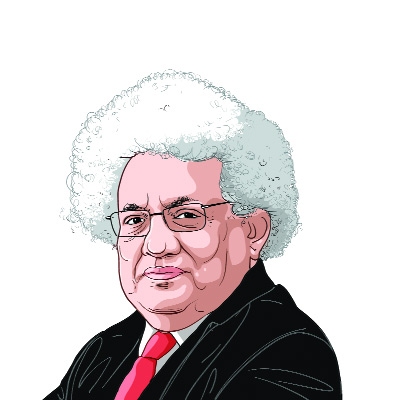Opinion Insaf ka mandir
Shakeel Badayuni,the great Urdu poet and lyricist,wrote Insaf ka mandir hai ye,bhagwan ka ghar hai.
Shakeel Badayuni,the great Urdu poet and lyricist,wrote Insaf ka mandir hai ye,bhagwan ka ghar hai. This is very much how I would describe the Lucknow bench of the Allahabad High Court. It seems justice has been done in a way few expected. The issue is not so much the partition of the disputed land into a third each,but the logic behind it.
The three judgesSudhir Agarwal,DV Sharma and SU Khannote that there was joint use of the site by Hindus and Muslims before 1857. They observe,though with some difference,that there was no temple on the site when the mosque was built. They then note that by tradition and belief,Hindus think that Ramachandra was born at a spot somewhere under the central dome. This cant be proved as a fact. There are no personal relics of Rama,unlike those of Buddha,like his tooth in Kandy and in Hazratbal in Kashmir. Whatever the historicity of Rama,he appears as a petitioner in the case. So,there is a legal entity there.
The more important observation is that neither the akhara nor the Wakf board can prove title to the land as required by the Evidence Act. This is the coup de grace. Once you combine that fact with the cohabitation since before 1857,we have a basis for the ecumenical settlement which the judges have delivered. Unlike Solomons judgment where there was a baby to be apportioned between two disputing claimants,dividing the land causes no physical pain to any sentient being. I have no knowledge of the law beyond what I read in newspapers,but the decision seems to embody wisdom,irrespective of whether it is strictly true in law or not.
From the time that Rama was born (date unknown) or even since 1528,much has changed in India. The British gave us a system of law which,apart from cricket,is the one British gift Indians are most obsessed with. In the entire dispute,no one has challenged the relevance of the legal system in deciding the issue. The only demand is for more of the same as parties wish to appeal to the Supreme Court. That will take time but I very much doubt if a better compromise can be reached by pursuing the issue.
For Muslims,the original occupation having been effected by force and not legal possession,there should be joy that now there can be a new functioning mosque on the site. For Hindus,who had no legal but only an emotional claim,there should also be joy that the courts have admitted a mythical claim to be proper. For the akhara (surely a secular place for pahalwans of all religions to joust together),there should also be joy that its claim has been treated on par with that of the Wakf Board. It is now time for the Central Government to get off its neutral high horse and take charge. Even while an appeal may be pending,it should immediately explore the appropriate ways in which the land can be apportioned.
Since mid-nineties,I have been advocating that a multi-faith complex be built in Ayodhya on this very spot. Now,the court has given the go ahead. The government should declare that an international competition will be held for a design of a multi-faith site with a mandir and a masjid plus a neutral space for whatever the Nirmohi akhara wishes to do. Modern India has many more resources than before. Indeed,the government should invite private donations for the new mandir and the masjid. Let the very best design be chosen so that India can celebrate its ecumenical culture. After all,the Prime Minister as well as the Congress president were brought up in religions other than Hinduism or Islam. Let India take advantage of that unique position.
Jerusalem is a centre of Judaic,Christian and Muslim faith where in a single location all three religions are worshipped. Ayodhya can be like thata centre of multi-faith practice. India can display its achievements as a democracy and a secular republic and a land of multi-faith practice.





